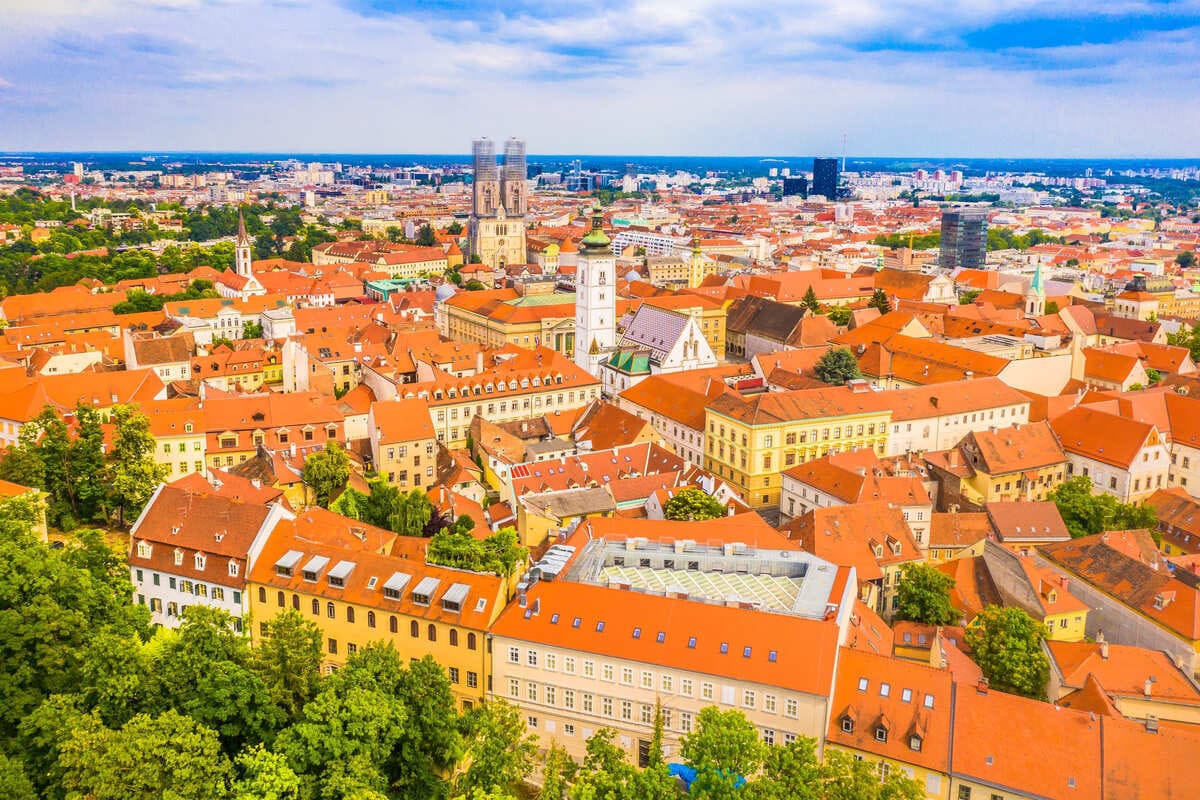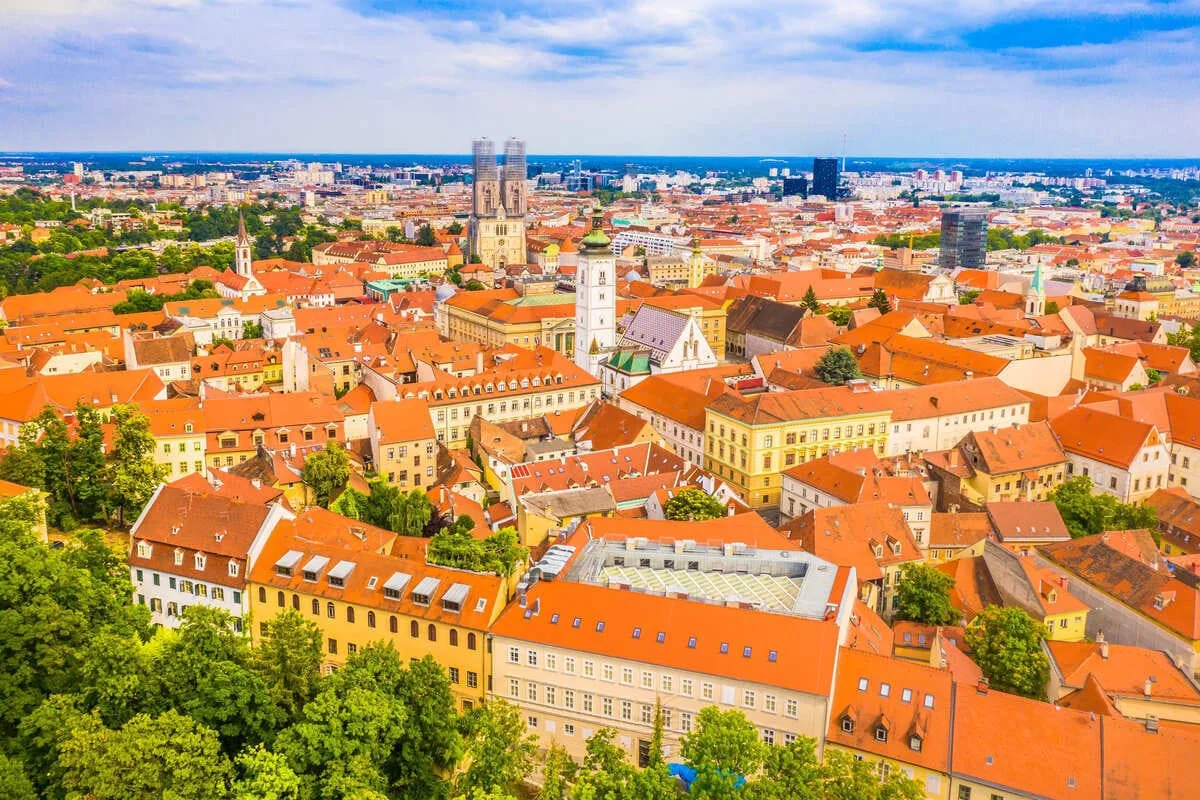
Whatever happened to the Europe we knew and loved?
Cobbled streets and half-timbered houses that once evoked fairytale scenes are now littered and plagued by pickpockets. Train stations that once stirred nostalgia with their ornate architecture and daily humdrum now house rough sleepers and have become hotspots for crime.
Places like England, France, and Germany were meant to tell ancient tales of chivalry and long-lost kingdoms. These days, you’re lucky if you visit certain European capitals and return home unscathed, with your phone and wallet intact.


We don’t know when Europe will get a grip on the dire situation it’s facing, but we’re also glad to say that these well-known problems aren’t universal.
The western part of the continent may be in tatters, but in these 5 European capitals, you’ll find cleaner cities, stronger social cohesion, lower levels of illegal migration, and guess what, much safer streets.
That’s not a baseless claim on our part: the U.S. State Department itself agrees, having listed all of the below as Level 1 destinations. In non-technical terms, Americans can exercise ‘normal’ precautions when visiting:
Zagreb, Croatia


Despite being the capital of one of Europe’s most popular summer hotspots, Zagreb remains largely overlooked by tourists beach-hopping along Croatia’s island-fringed coast, and we can sort of understand why.
It’s not coastal, after all, and Croatia is synonymous with Dalmatian beaches, but Zagreb remains a vibrant city dotted with stately Austrian-influenced buildings, leafy public squares flanked by cozy cafés, and the odd medieval landmark hidden amidst a maze of pedestrian-friendly streets.
The best part is, contrary to the average Western European capital, you’ll rarely come across the usual ill-intentioned, hooded type that circles Old Town areas like vultures, nor will you risk getting harassed by a foreign man from an incompatible culture as a woman: Zagreb is Croatian through and through.
Ljubljana, Slovenia


Over in Croatia’s neighboring country, Slovenia has recently been re-discovered by tourists due to its gorgeous alpine scenery, which rivals Switzerland’s own, and rich medieval heritage, and there’s nowhere better to soak up all that Old World charm than Ljubljana:
A quaint and compact capital city with a small-town feel, it lines a scenic river spanned by stone bridges, and its narrow, winding alleys, lined with boutique shops and quirky pubs, all culminate in a monumental hilltop castle. The quintessential Europe.
Other than being downright gorgeous, Ljubljana (and Slovenia as a whole) is not a primary destination for smuggling gangs and irregular travelers, due to its strict border control and zero tolerance towards criminals operating within national borders.
Tallinn, Estonia


In Northeastern Europe, Tallinn is a typical picture-perfect European medieval capital,surrounded by walls and guarded by towers, with pointy church spires that seem to touch the sky, and a cobbled labyrinth of a historic center.
Other than not being as touristy as its Western counterparts—you’ll rarely come across huge crowds here—Tallinn has very few crime, regardless of nature: violence both within, or outside the Old Town is practically unheard-of, and even pickpocketing is uncommon.
In recent years, local authorities have doubled down on security following the Russian invasion of Ukraine: though not directly impacted by the war, as both a member of the European Union and NATO, Estonia actually borders Russia, yet they have so far successfully retained its Level 1 status.
Riga, Latvia


West of Estonia, Latvia is yet another tiny Eastern European nation on the shores of the Baltic Sea, best represented internationally by Riga, a coastal capital best distinguished by its eclectic architecture: from Stalinist Soviet buildings, to beautiful Orthodox churches, to Art Nouveau, you’ll find it all here.
Now, here’s what you won’t find in Riga: huge crowds, dirty back alleys, ruined train stations that have been essentially converted into refugee camps, and non-Western sentiment: Latvians are proud of their postcard-ready capital and Baltic culture, and they intend to keep it that way.
A little-known fact about Riga is that it hosted the first decorated Christmas tree that was ever put up, right by the city’s main attraction: the House of the Blackheads, a medieval guildhall facing the Town Hall Square.
Vilnius, Lithuania


Last but certainly not least, Lithuania is the southernmost of the three Baltic states, and if there’s one European city that never gets the praise it deserves, that’s Vilnius, the country’s idyllic capital, located in a lush valley at the confluence of two rivers.
Its large Old Town is a UNESCO World Heritage Site peppered with Baroque churches and hidden passageways, while the neighboring Užupis is a self-declared ‘republic’ (in all but name) where Bohemian lovers and artists take refuge once the sun goes down.
Much like its Baltic siblings, Vilnius has very low, not to say insignificant levels of crime, a direct result of a tough stance on crime, when perpetrated by both citizens and foreign arrivals, and extensive use of CCTV and policing.
Heading to Europe soon and find the official government websites far too confusing to navigate?
Use our free, user-friendly Travel Advisory Checker here, and get the correct, most up-to-date safety advice in simple words, none of the usual technical fluff, in just under a minute.
Vinicius Costa
Vini, our senior lead writer at Travel Off Path, has over 60+ countries under his belt (and currently weaving tales from Paris!), and a knack for turning off-the-beaten-path experiences into informative stories that will have you packing your bags.
The Travel Off Path Advantage: Your Travel Toolkit
Subscribe To Our Latest Posts
Enter your email address to subscribe to Travel Off Path’s latest breaking travel news, straight to your inbox.
Източник за тази статия
Наши спонсори са:
Български трактори на добри цени при изключително качество






